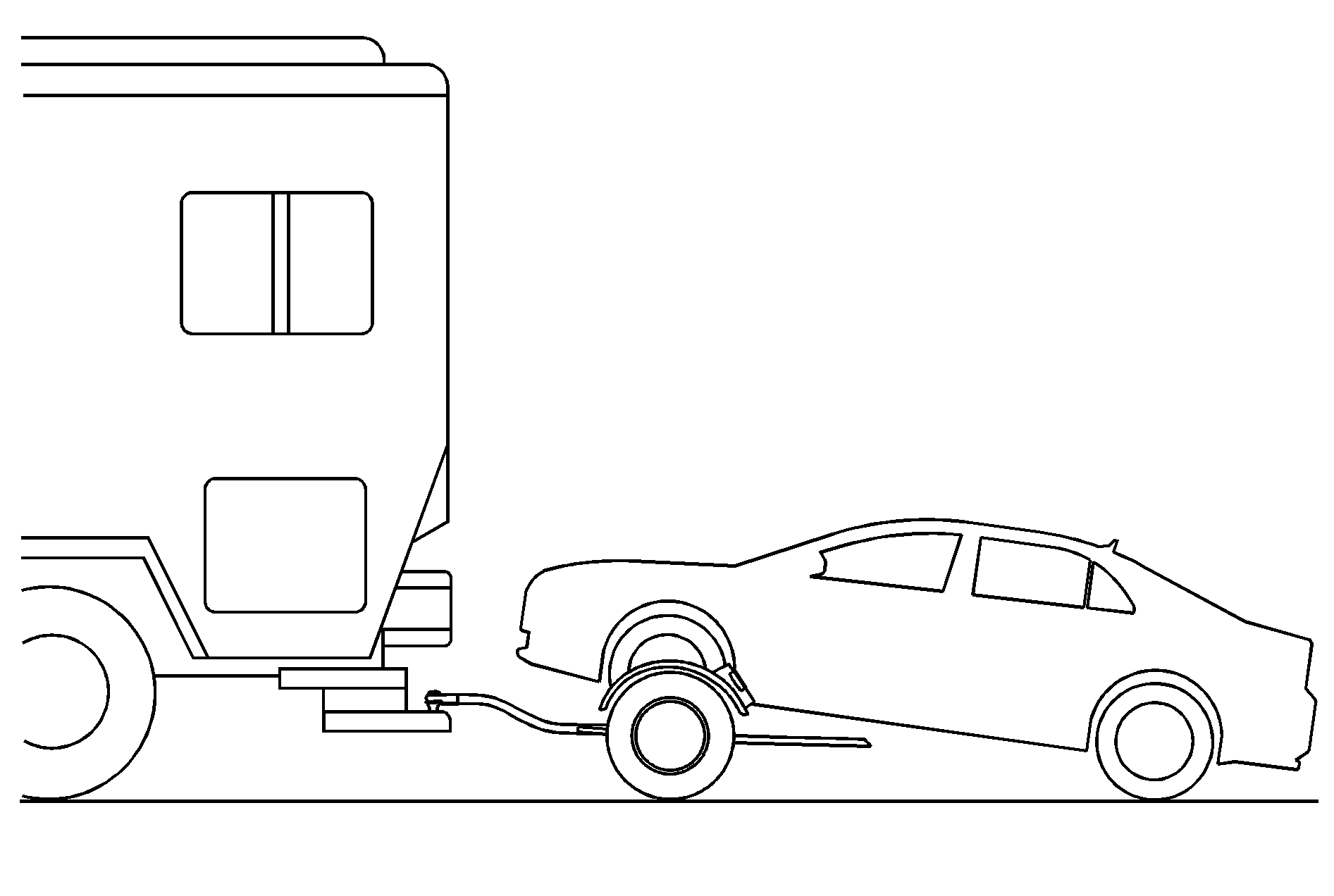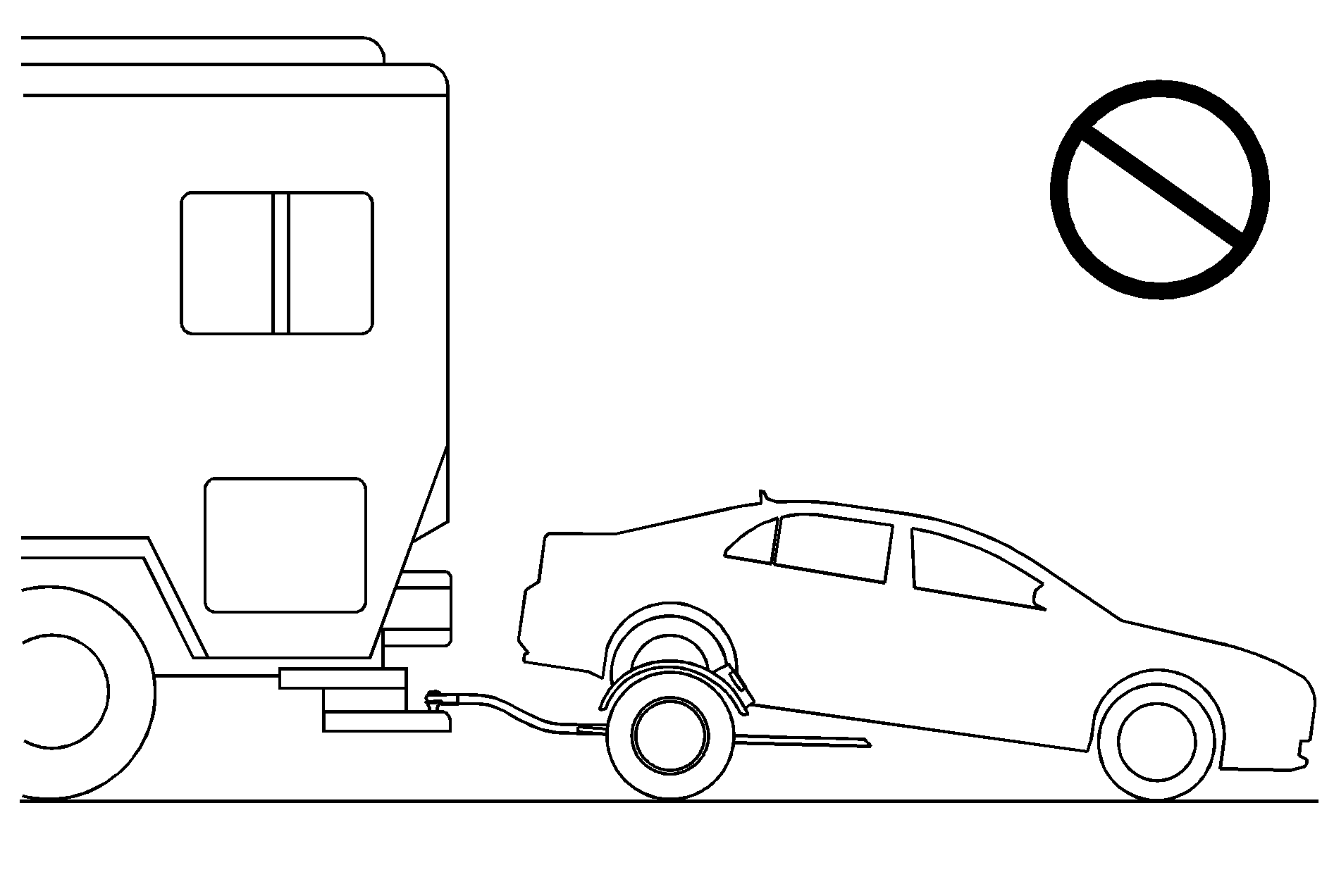Recreational vehicle towing means towing the vehicle behind another vehicle - such as behind a motorhome. The two most common types of recreational vehicle towing are known as dinghy towing and dolly towing. Dinghy towing is towing the vehicle with all four wheels on the ground. Dolly towing is towing the vehicle with two wheels on the ground and two wheels up on a device known as a dolly.
Here are some important things to consider before recreational vehicle towing:
| • | What's the towing capacity of the towing vehicle? Be sure to read the tow vehicle manufacturer's recommendations. |
| • | How far will the vehicle be towed? Some vehicles have restrictions on how far and how long they can tow. |
| • | Does the vehicle have the proper towing equipment? See your dealer/retailer or trailering professional for additional advice and equipment recommendations. |
| • | Is the vehicle ready to be towed? Just as preparing the vehicle for a long trip, make sure the vehicle is prepared to be towed. See Before Leaving on a Long Trip. |
Dinghy Towing
When dinghy towing, the vehicle should be run at the beginning of each day and at each RV fuel stop for about five minutes. This will ensure proper lubrication of transmission components.

To dinghy tow the vehicle from the front with all four wheels on the ground:
- Position the vehicle to tow and then secure it to the towing vehicle.
- Shift the transmission to P (Park) and turn the ignition to LOCK/OFF.
- Set the parking brake.
- To prevent the battery from draining while the vehicle is being towed, remove the following fuse from the instrument panel fuse block: (IGN SENSOR). See Instrument Panel Fuse Block for more information.
- Turn the ignition to ACC/ACCESSORY.
- Shift the transmission to N (Neutral).
- Release the parking brake.
Remember to reinstall the IGN SENSOR fuse once the destination has been reached.
Notice: If 65 mph (105 km/h) is exceeded while towing the vehicle, it could be damaged. Never exceed 65 mph (105 km/h) while towing the vehicle.

Notice: Towing the vehicle from the rear could damage it. Also, repairs would not be covered by the vehicle warranty. Never have the vehicle towed from the rear.
Dolly Towing

Tow the vehicle with the two rear wheels on the ground and the front wheels on a dolly:
To tow the vehicle with two wheels on the ground and a dolly:
- Put the front wheels on a dolly.
- Put the gear shift lever in P (Park).
- Set the parking brake.
- Clamp the steering wheel in a straight-ahead position with a clamping device designed for towing.
- Remove the key from the ignition.
- Secure the vehicle to the dolly.
- Release the parking brake.

Notice: Towing the vehicle from the rear could damage it. Also, repairs would not be covered by the vehicle warranty. Never have the vehicle towed from the rear.
